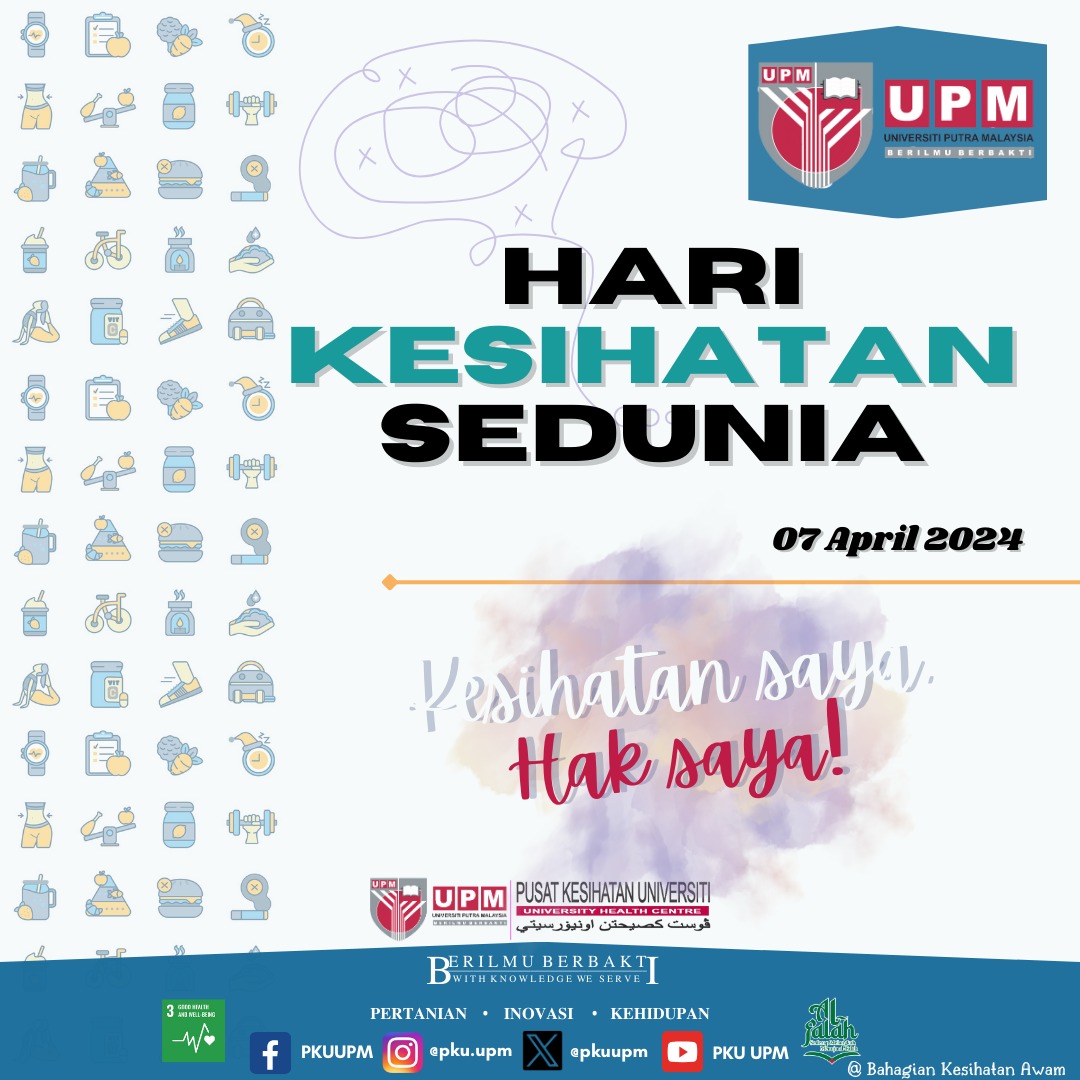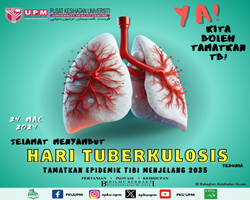Working people are exposed to occupational hazards and at risk of having occupational disease or injury in a rapidly industrializing country like Malaysia. Mental health, infectious disease, and work-related musculoskeletal disorders are the top three problems being discussed for the working people in Malaysia. It also showed an increasing trend of mental health problems during pandemic COVID-19. In addition, hospital was the highest workplace where the occupational health problems were reported. In 2016, almost two million deaths were attributable to occupational risks and accounted for an estimated 2.1% of all deaths and 2.7% of the disease burden worldwide. Occupational disease or injury which occurs directly due to the nature of work and workplace environment may reduce workers productivity, increase sick leave, and reduce the quality of life. The Department of Occupational Safety & Health (DOSH) published a yearly report on occupational poisoning and disease in Malaysia which shows increasing trends from 454 cases in 2005 to 9860 cases in 2019. The documentation of occupational disease is important for workers compensation due to occupational disease or injury.

From this paper review, these are the main occupational disease and work-related issues that have been discussed from the year 2016 to 2021:
1)Mental Health Problems
A total of 29 articles discussed mental health problems among workers in Malaysia. Depression, anxiety and stress, emotional exhaustion, burnout, and workplace bullying were involved mainly among healthcare workers (HCWs) (15/29), while another half of the literature was spared for other occupations such as teachers (3/29) and office and general workers.
2)Infectious Diseases
Among workers according to the workplace environment or those who had exposed with the biological hazard. The commonest occupational infectious disease in Malaysia is leptospirosis which can occur in animal farms, forests, palm oil plantations, wet markets, and municipal areas. Many other infectious diseases are related to migrant workers who were detected having hydatid disease, blastocysts, entamoeba infections, Giardia duodenalis, worm infestations, and Toxoplasma infection.
3)Work-Related Musculoskeletal Disorders (WRMSDs)
May cause problems among the workers who need to use physical strength during working or in the sedentary group. It can be the hand-arm vibration syndrome and pain in a specific body part such as the neck, back, shoulder, and knee or any other body part which can be grouped as a musculoskeletal disorder. Low back pain was among the common problems and various studies reported the prevalence among HCWs: nurses (73.1%–76.5%), ambulance drivers (65.0%), and intern doctors (19.8%). Studies among dentists and dental auxiliaries reported upper back pain which involved the neck region. Besides HCWs and teachers, a study among commercial vehicle drivers also reported the prevalence of low back pain at 66.4% . Those who worked in a factory were exposed to MSD due to ergonomic factors such as repetitive activities.
4)Occupational Injury
The literature mainly focuses on non-fatal occupational injury than fatal injury. HCWs were at risk of needle stick injury and exposing them to the blood-borne disease. Heat injury was described among outdoor workers such as farmers, forestry workers, and municipal workers. Musculoskeletal injuries may happen among athletes, palm oil plantation workers, and construction workers ranging from muscle strains, sprains, and tears to falls from heights.
5)Respiratory Problems
The respiratory problem among workers might include the problem of inhaling chemical hazards such as metal dust, endotoxin, pesticide, and any air pollutants. In terms of occupation, traffic police, firefighters, and farmers are among the at-risk workers for outdoor areas. In contrast, indoor workers are also at risk of respiratory problems due to indoor dust. HCWs who worked in an orthopaedic clinic might be exposed to dust from the plaster of Paris material. Besides that, those who worked in mechanically ventilated offices in a tropical country were exposed to endotoxin from office dust. Welders and factory workers should practice proper protection to prevent respiratory problems.
6)Cardiovascular Disease Risks
The trend of CVD risk prevalence is increasing in the general population and affecting the most productive population at an early age. The sedentary administrative workers were reported to have a prevalence of smoking (20%), physical inactivity (50%), and unhealthy diet (87%). HCWs and firefighters were reported to have obesity problems despite their knowledge and nature of work. A study conducted among secondary school teachers found that normal-weight participants had metabolic syndrome which put them at risk of progressing to CVD at a later age.
7) Hearing Problems
Hearing loss is not uncommon among factory workers and in all workplaces which are exposed to the level of noise ≥85 dB. Two studies highlighted the hearing loss issue among factory workers while one study examined the noise level in the work area. The prevalence of hearing loss was 73% among 146 respondents who worked in small and medium industries in Selangor. Among the factors associated with hearing problems were occupational daily noise, length of service, infrequent use of hearing protection devices, age, male gender, and smoking status.
DOSH under the Ministry of Human Resources is responsible to ensure the safety, health, and welfare of people at work. The yearly statistic on occupational poisoning and diseases under the 1994 Act is useful for the stakeholders in planning for a preventive program at the national level in line with the healthy workplace campaign. With the current situation of the post-pandemic era, a higher number of mental health problems arise but may not be reported to the authority. Thus, collaborative work among the authorities is needed to increase reporting of any cases suspected of psychosocial problems.
According to the Occupational Safety and Health Master Plan 2021–2025 (OSHMP25), one of the indicators aims to increase the occupational diseases/injuries reported by 30% in 2025. This may need collaborative work among employers in both public and private industries to be responsible for data reporting. Besides that, the small and medium industries lack in providing the proper channel of healthcare service where the workers' health assessments are not conducted by the occupational health doctors but are treated as normal patients in the local health facility. Therefore, working people in Malaysia should be advised to seek help if they are facing any occupational hazards at the workplace. Collaborative work between agencies must be strengthened towards providing a better healthcare service for working people.

Reference:
J Environ Public Health. 2023; 2023: 1798434 (https://www.ncbi.nlm.nih.gov/pmc/articles/PMC9904905)-Published online 2023 Jan 31
Prepared by:
Dr Siti Noor Azlidah Bt Ali
(Occupational Health Doctor PKU)
Date of Input: 04/10/2023 | Updated: 04/10/2023 | izzatussofia
MEDIA SHARING






























